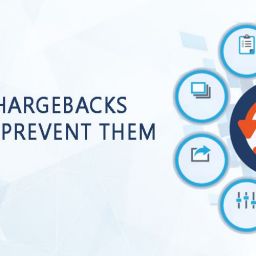
Recommendations to Improve Merchant Statistics
Below are listed recommendations that could help to reduce fraud level. Merchant must provide an action plan to reduce fraud levels by the payment system. If the merchant doesn’t do anything to reduce fraud level Risk and Compliance department will close merchant traffic. To avoid penalties and disqualification, Merchant must review its business processes. Below are listed recommendations that could help to reduce fraud level.
Here are some guidelines for preventing Internet, telephone or mail order fraud:
Request that cardholders provide the following information during the order taking process:
- Cardholder Name, exactly how their name appears on their card.
- Card Number
- Card Expiration Date, four-digit number MM/YY.
- CVV (Card Verification Value) and/or CID (Card Identification Data) for some regions, the three-digit number located on the back of the card in the signature panel.
- Card billing address along with the ship-to address (when necessary).
- Home, business or other telephone number where the cardholder can be reached.
For each transaction, be sure to:
- Request and validate the CVV (Card Verification Value) and/or CID (Card Identification Data) for some regions, the three-digit number located on the back of the card in the signature panel.
- Verify the customer’s billing address, either electronically or by our address verification service (AVS).
- Verify the cardholder name, full billing address, email address and phone number with the Issuer in real-time using.
- Check your delivery service contract for who is responsible for merchandise not delivered.
- Get a signature for each delivery and keep all delivery records.
- Do not key card information to force through a sale for which you have received any declined response to your authorization request.
- If the sale is on a credit card, refund sales on the same card.
- Include your common DBA and customer service number on the customer’s transaction receipt.
- Clearly communicate any and all delivery charges, restocking or other fees.
- Clearly explain any return policies and offer documentation of this policy with each sale.
- When working on a chargeback, document efforts to satisfy the customer. Be sure to respond to all chargebacks.
- Duplicate charges, or installment plans, unless otherwise stated, require an authorization for each sale.
Best practices for e- commerce:
- Clearly identify your company name on your Website, on each page if possible.
- Include your common DBA and customer service number on the customer’s transaction receipt.
- Offer a street or P.O. Box address (some people may not want to utilize e-mail) as contact information on your Website.
- Offer a customer service telephone number.
- Clearly identify all features of a product or service.
- Clearly communicate any and all delivery charges, restocking or other fees.
- Clearly identify your company’s return policy and shipping time frames and offer documentation of these policies with each sale.
- Disclose the information security policies and processes your business has in place.
How protect customer information on my Web site?
- Protecting Customer Information
- Truncate all credit card information.
- Do not store any CID data in your records or on any type of sales data.
- Secure your site. Data MUST be stored in a secure environment that is protected by firewalls from your Website or access over the Internet. This data should be password protected with limited authorized use.
- Do NOT store any customer or credit card information on your Web Server.
- Please refer to your Merchant Operating Regulations for further Card Not Present (CNP) requirements with respect to the submission of sales.
Wоuld you lоvе to be раrt оf thiѕ?? Feel frее tо get in touch ,wе’ll bе glаd to hеаr frоm уоu.
![]()
Email us anytime!
Email customer service 24/7
![]()
Call us anytime!
Reach customer care 24/7 at +1 (888) 901-8653





